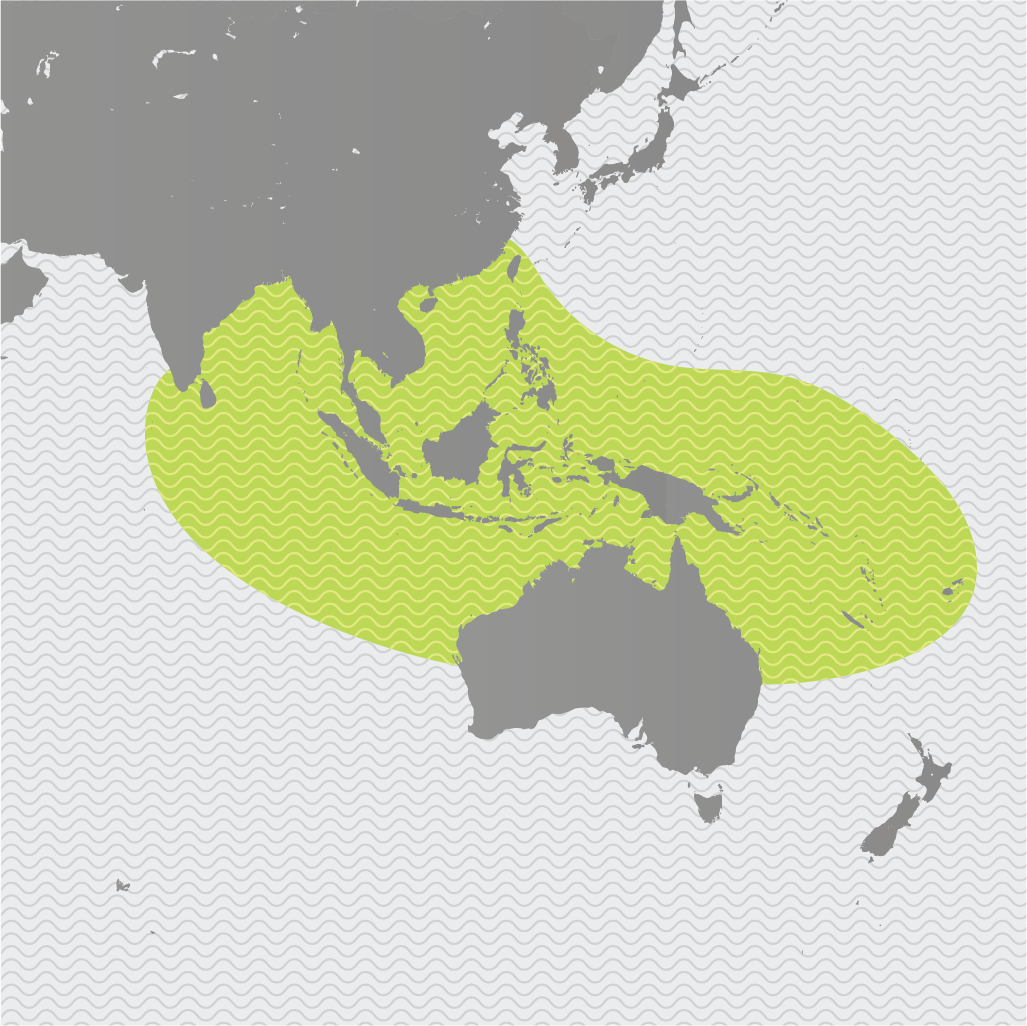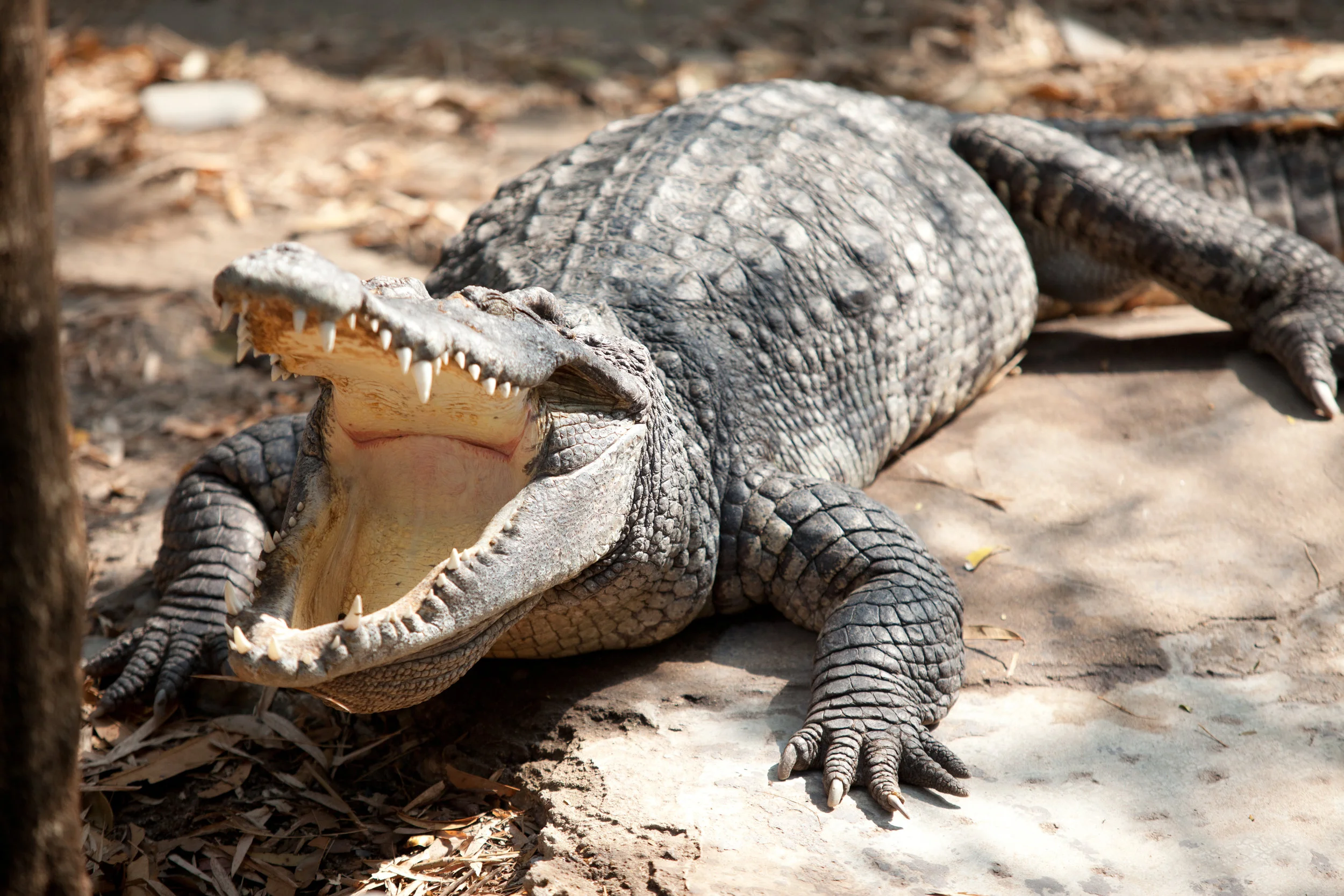Saltwater Crocodile
"On the Move" by Allison Theus (digital)
“I chose these guys for the simple fact that they are big, powerful predators.”
Habitat
The Saltwater Crocodile can travel over a thousand kilometers by sea. As a result, they can be found all across the north of Australia, and further north. From the Solomon Islands and Vanuatu across Papua New Guinea, Indonesia, the Philippines, Malaysia, all the way to Vietnam, Cambodia, Thailand and India.
Family Life
While most crocodilians are social animals sharing basking spots and food, saltwater crocodiles are more territorial and are less tolerant of their own kind. Adult males will share territory with females, but drive off rival males. They spend much of their time in the water and come ashore to warm up in the sun and to nest. Saltwater crocodiles reproduce via internal fertilization, and females carefully look over their nests, after laying a clutch of approximately 50 eggs. The temperature of the nest determines the sex of the hatchlings. Cooler nests produce mostly females, while warmer nests produce mostly males. Females carry new hatchlings to nearby bodies of water so that they will not be harmed and continue to protect the young for at least several months.
Lifespan
Their lifespan is up to 70 years.
Hunting Habits/Diet
They mainly eat small reptiles, fish, turtles, but they also kill and eat much larger prey such as wild pigs, buffaloes, cattle and horses. They will pretty much anything they can get their jaws on and unfortunately, they also on average eat at least a dozen people per year! Classic opportunistic predators, they lurk patiently beneath the surface near the water's edge, waiting for potential prey to stop for a sip of water. Without warning, they explode from the water with a thrash of their powerful tails, grasp their victim, and drag it back in, holding it under until the animal drowns.
Population
Saltwater crocodiles were nearly hunted to extinction by the mid-1960s. Today the number remaining is unknown.
Fun Facts
The saltwater crocodile is the largest reptile in the world.
It can stay submerged for more than an hour.
Why are they Endangered?
Due to their size, aggression and distribution, saltwater crocodiles are regarded as the most dangerous extant crocodilian to humans. Saltwater crocodile hides are valued above all other crocodilians, and illegal hunting, habitat loss, and hostility toward the species because of its reputation as a man-eater continue to put pressure on the population. Their eggs and meat are eaten, and their skin is particularly valuable for use as a material for bags, shoes, and other goods. Consequently, illegal hunting continues to pose a risk, especially those in Australia, despite the implementation of legal protection. They are also increasingly losing their habitats to human encroachment and alteration of lands, primarily for agricultural productions.
Status
Least Concern


